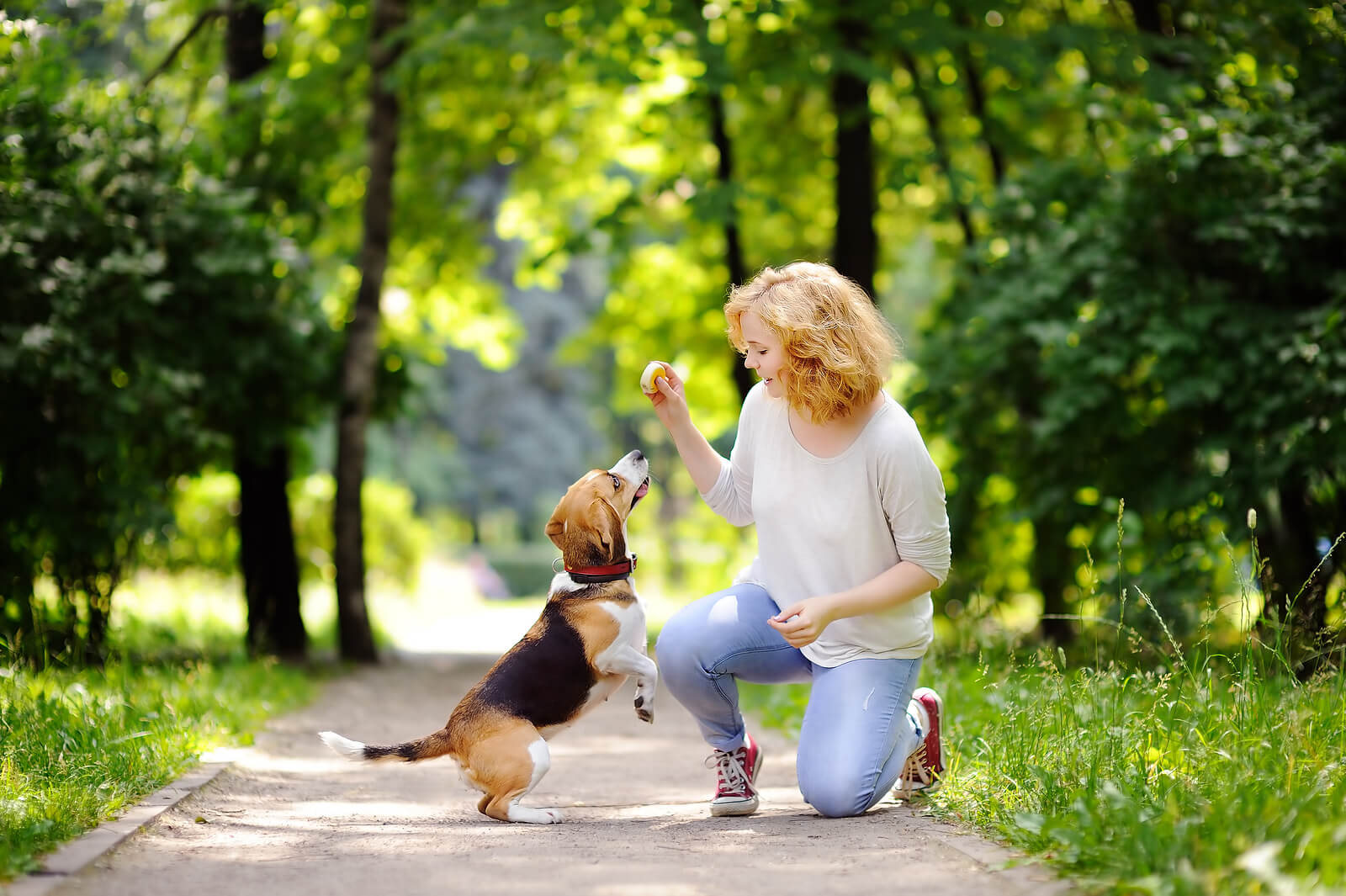You may love passively watching your dog run around a field, or having them snuggle by your side on a cold evening, but one of the great joys of dog ownership is honing the communication between owner and pet. There’s few better routes to doing this than teaching and practicing new commands!

Teaching dog tricks sometimes feels daunting, and a common notion that you can’t teach an old dog new tricks doesn’t help some pet owners. However, if you practice these simple strategies, you may find that communicating with your dog, at whatever age, is easier and more fun than you’d suspected.
So, grab a bag of your dog’s favorite treats, and get started!
Sit
Get your dog’s attention with a treat, and make sure that they come close to you.
Lower the treat to their nose, and avoid giving the treat if the dog is trying to bite it out of your hand.
Once the dog is calm and attentive, slowly raise your hand up a foot or two toward the ceiling.
Usually, this will encourage the dog to set their butt on the ground.
When this happens, say Sit.
As for all of these tricks, reward the dog with love and a treat, and repeat a few times in each training session.
Lay
Once a dog knows how to sit, they can learn to lie down. Dogs don’t typically enjoy taking submissive postures, so make sure that the training environment is calm, positive, and distraction free.
Close a treat in a loose fist.
Bring the treat to your dog’s snout to ensure that their mind is focused on the prize.
Once they are focused, slowly lower the treat to the floor.
Next, glide the treat across the floor in front of your dog, allowing for them to follow it with their snout, and eventually, assume a lying position on the floor.
Once they lie down, say Lay, and reward them with a treat.
Then repeat!
Come
This is one of the most crucial commands to teach a dog. Not only is it convenient for the owner, but it can come in handy in hazardous situations.
Put a leash on your dog.
Slowly back a few feet away from the animal.
Once a measurable distance is established, lightly pull on the leash so that the dog moves toward you.
Once they’ve arrived, say Come, and reward your dog with a pet and a treat.
Repeat a few times in each session with a leash on, and eventually, remove the leash and practice indoors.
Shake
First, have your dog sit directly in front of you.
Once face to face, kneel down to their level and get close to your animal.
Say the word Shake, and while doing so, slide your hand from the animal’s armpit to their elbow, gently lifting the arm at the elbow.
Lightly grab their paw, and shake!
Reward your dog with a good scratch and a treat.
Repeat this a handful of times in multiple sessions, until your dog is lifting their paw on their own!
Speak
This one’s a bit tricky, as it involves some observational planning.
Figure out what makes your dog bark without putting them in any danger. For quiet dogs, this may be a challenge, but you can still teach the command by waiting, at the ready, for an instance when they bark on their own.
Let’s assume your dog barks when the doorbell rings.
Ring the doorbell.
When your dog barks, reward them with a pet and a treat.
Repeat this as much as is tolerable.
When they bark on command, let the treats rain down!
There’s nothing quite like a well-trained pet with lots of tricks under their belt. Be patient, and willing to repeat over and over to get a clear message across. Once your dog has mastered these 5, simple tricks, move on to more complicated ones.
Your dog will be jumping through rings at Westminster in no time!